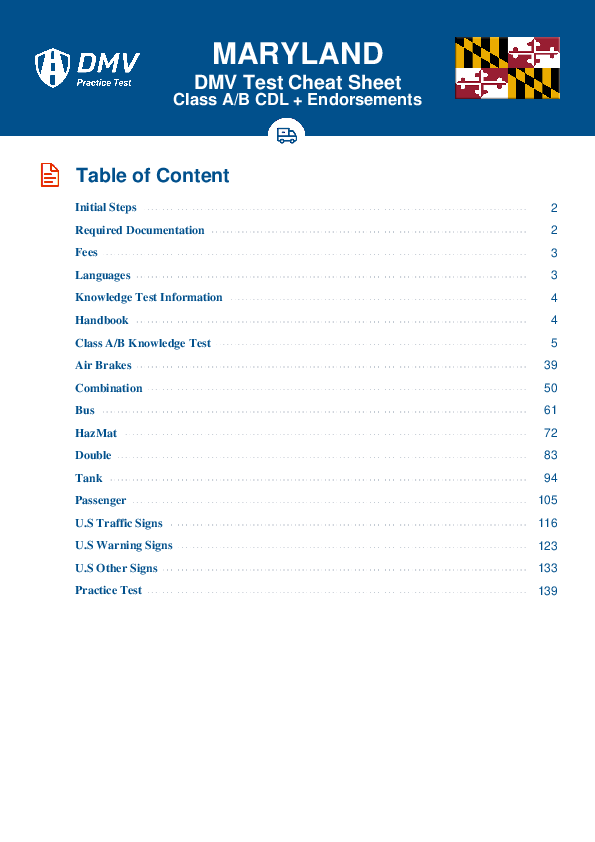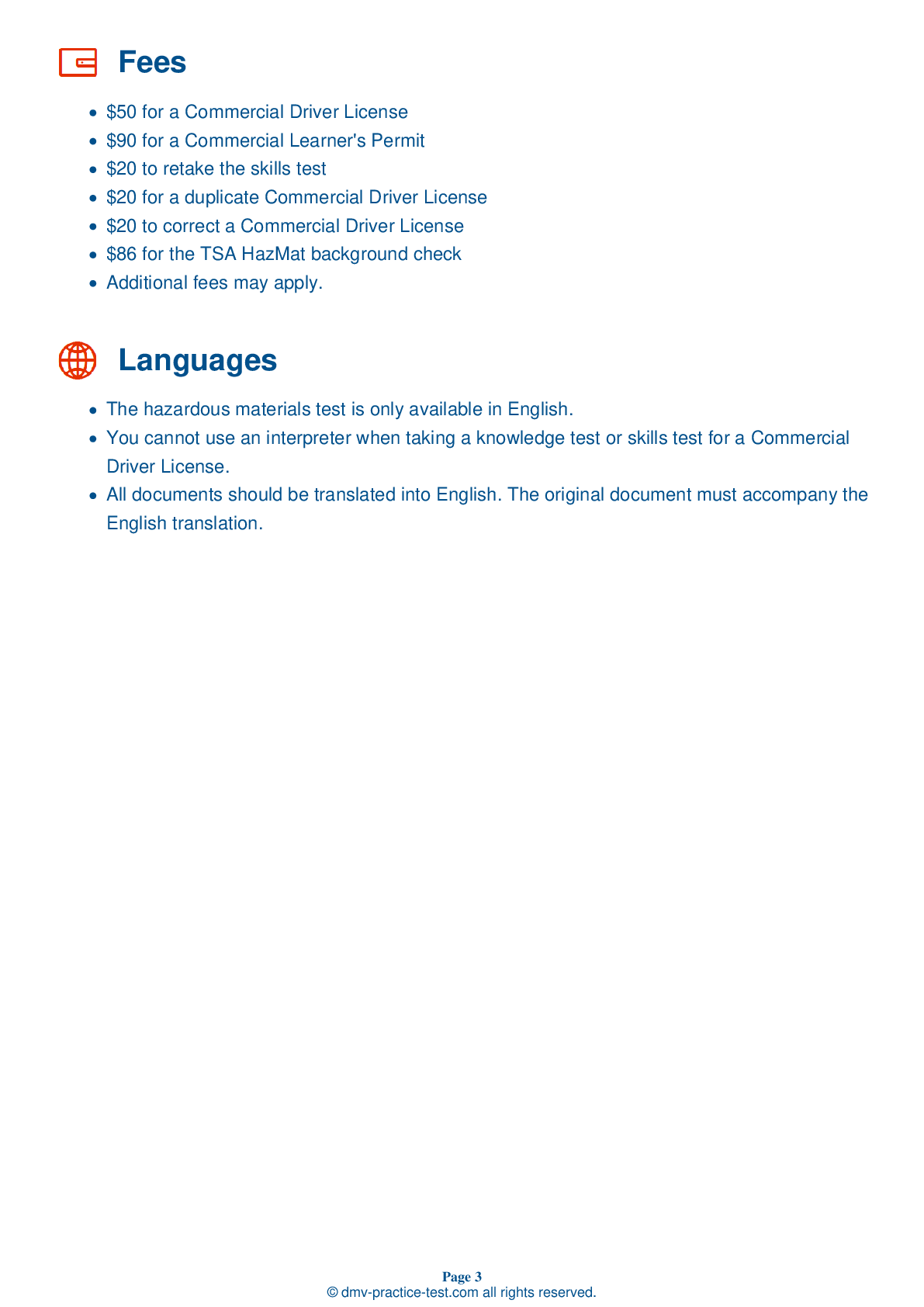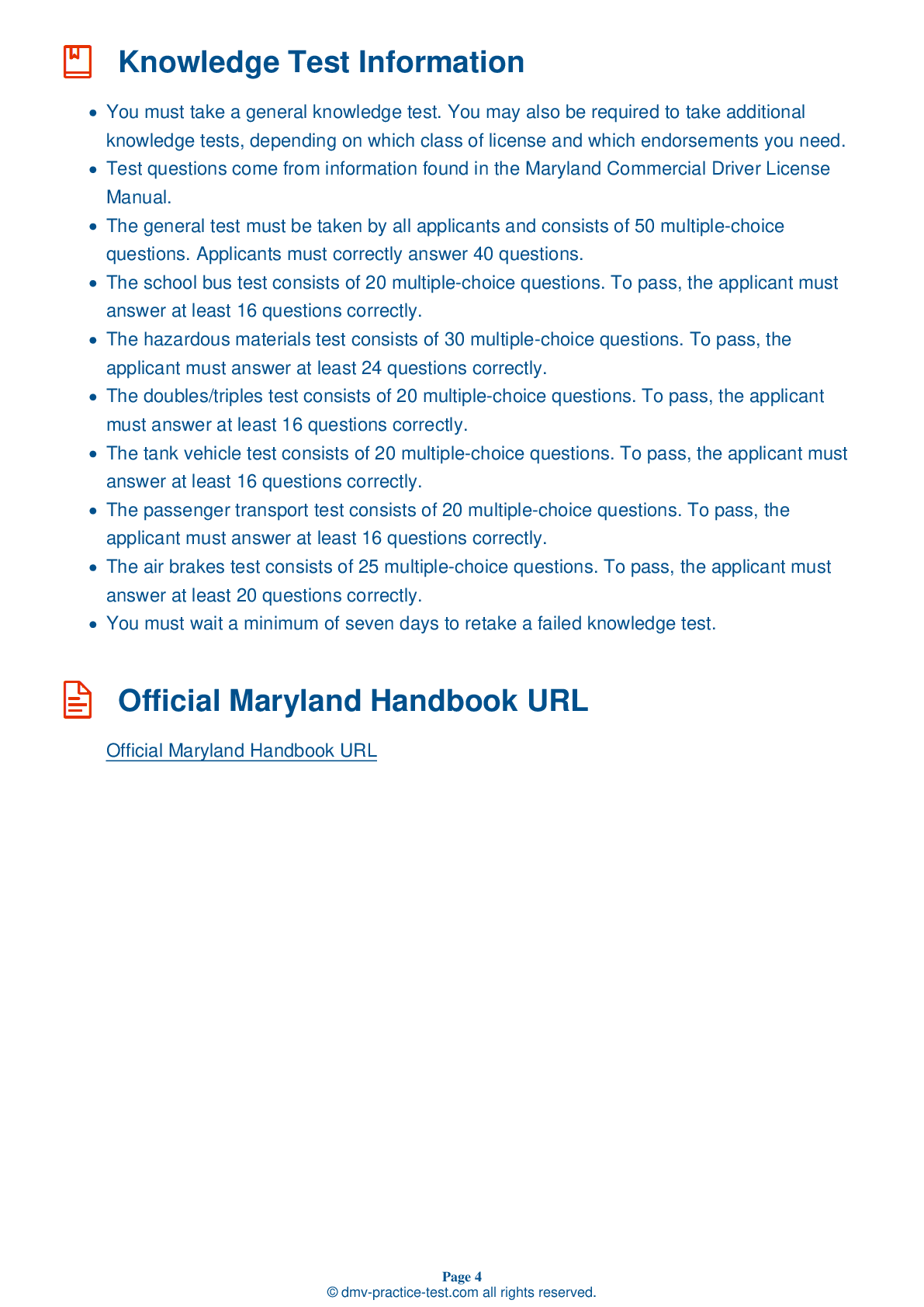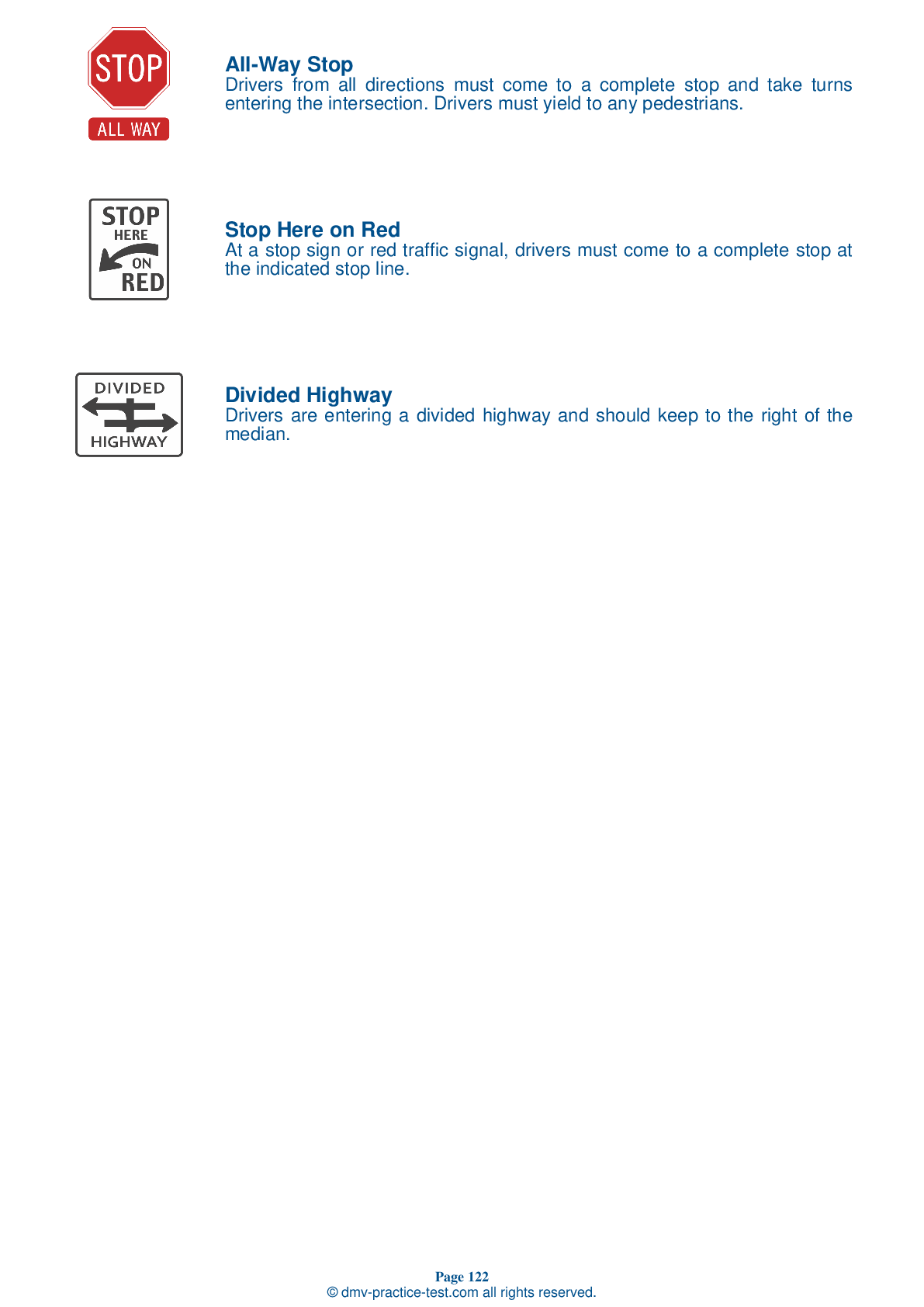Knowledge Test Class B #2
Class B Driving Test | Maryland 2025 #2 Page 2 of 7
Train for FREE online with our Maryland class B license test. The official exam test consists of several obligatory parts, with all of them checking your knowledge of different blocks of road rules. If you need to obtain a MD CDL class B permit in 2025, practice as much as possible. Free sample tests published on our website will help you check and improve your knowledge and boost your grades. Please bear in mind that CDL class B requirements may vary from state to state.
50
40
20
8 . When leaving your vehicle unattended:
In general, you should always use the parking brake when parking your vehicle. However, you should not apply the parking brake if your brakes are very hot or if your brakes are wet and temperatures are below freezing.
9 . Move over laws require:
If an emergency vehicle using its flashing lights is stopped on the side of a multilane road, move over laws require drivers to vacate the lane directly next to the vehicle, if possible. If a driver cannot move over safely, they must slow down and proceed with caution.
10 . When stopping in an emergency situation, you should:
If you need to make an emergency stop, you can use either the controlled braking method or the stab braking method. It's important to brake in a way that keeps your vehicle in a straight line but will still allow you to turn if necessary.
11 . If making a tight turn, the operator of a CMV should:
Drivers behind you may not anticipate how slowly your CMV must travel to safely make a right turn. You can help warn them in advance by braking early and slowing gradually.
12 . A vehicle stopped at a green light may indicate that the driver:
Is very patient.
It is important to observe other drivers' actions and identify clues that a person could be driving impaired. Drivers who have had too much to drink, are sleepy, are on drugs, or are ill can present hazards to other drivers. One sign that a driver may be impaired is that they stop in inappropriate places, such as at green traffic lights.
13 . When slowing down, you should ____ to warn other drivers
Before slowing down, it can be a good idea to lightly tap your brakes. This will cause your brake lights to flash, providing a warning to motorists behind you.
14 . Before driving a vehicle with air brakes, you should ensure that the spring brakes come on automatically when:
Driving uphill.
Before driving a vehicle with air brakes, you should ensure that the spring brakes come on automatically when air tank pressure falls to a level between 20 and 45 psi. You can do this by chocking the wheels and releasing air from the braking system by stepping on and off the brake pedal. Once the pressure drops to an unsafe level, the parking brake valve should pop out and spring brakes should come on.
Search the best driving school in your neighbourhood
2025 Maryland | Frequently Asked Questions
A CDL Class B license in Maryland allows the holder to operate single vehicles with a Gross Vehicle Weight Rating (GVWR) of 26,001 or more pounds, or any such vehicle towing another not in excess of 10,000 pounds. This typically includes buses, dump trucks, delivery trucks, and garbage trucks.
A Class B CDL license in Maryland permits the operation of single vehicles with a Gross Vehicle Weight Rating (GVWR) of 26,001 or more pounds, or such vehicles towing another not exceeding 10,000 pounds. This includes buses, dump trucks, tow trucks, delivery trucks, straight trucks and garbage trucks.
To acquire a Class B CDL license in Maryland, you must be at least 18 years old, possess a valid non-commercial driver's license, and pass a medical examination. You'll also need to pass the CDL general knowledge test and any additional tests for endorsements. Lastly, you must successfully complete a skills test which includes a pre-trip vehicle inspection, a basic controls test, and a road test.
In Maryland, to qualify for a Class B Commercial Driver's License (CDL), you must be at least 18 years old for intrastate driving (within Maryland only) and at least 21 years old for interstate driving (across state lines). You also need a valid non-commercial driver's license.
Specific endorsements aren't necessary for a Class B CDL license, but they can expand your driving capabilities. Endorsements like Passenger (P), School Bus (S), and Tank Vehicle (N) require additional tests. For example, if you plan to drive a school bus or tank truck, you would need the appropriate endorsements.
The Class B CDL skills assessment in Maryland includes three main parts: a pre-trip vehicle inspection to test your ability to assess the safety of your vehicle, a basic control skills test to evaluate your ability to maneuver and control the vehicle, and an on-road driving test to assess your driving skills in various traffic situations.
Yes, Class B CDL license holders in Maryland are limited to operating vehicles with a Gross Vehicle Weight Rating (GVWR) of 26,001 lbs. or more, or towing vehicles not exceeding 10,000 lbs. They cannot operate Class A vehicles unless they have the appropriate endorsements. Additionally, interstate drivers must be at least 21 years old.
Yes, in Maryland, the written Class B CDL test can be taken in several languages other than English. These include Spanish, French, and Korean among others. However, federal regulations require that all CDL holders must be able to read and speak English sufficiently to converse with the general public and understand highway traffic signs and signals.
Yes, you can request test accommodations for the Class B CDL written exam in Maryland due to a disability. The Motor Vehicle Administration (MVA) provides reasonable accommodations such as sign language interpreters, extra time, and accessible testing equipment. It's recommended to make your request in advance to ensure the necessary arrangements can be made.
If you don't pass the Class B CDL written test in Maryland, you can retake it. However, you'll have to wait at least one business day before retesting. There's no limit to the number of attempts you can make to pass the test, but a retesting fee may apply each time. It's advised to study thoroughly to increase your chances of passing.




